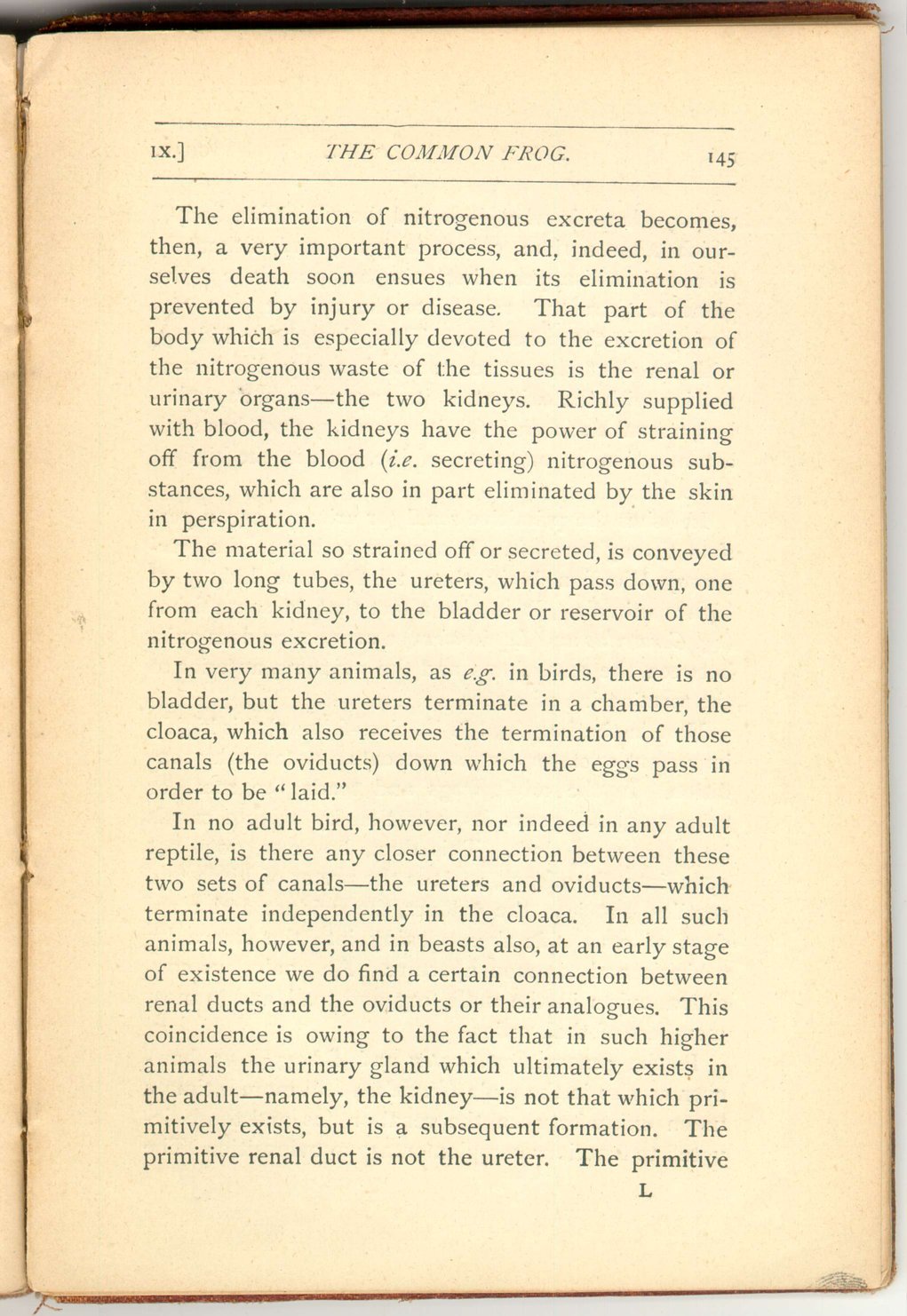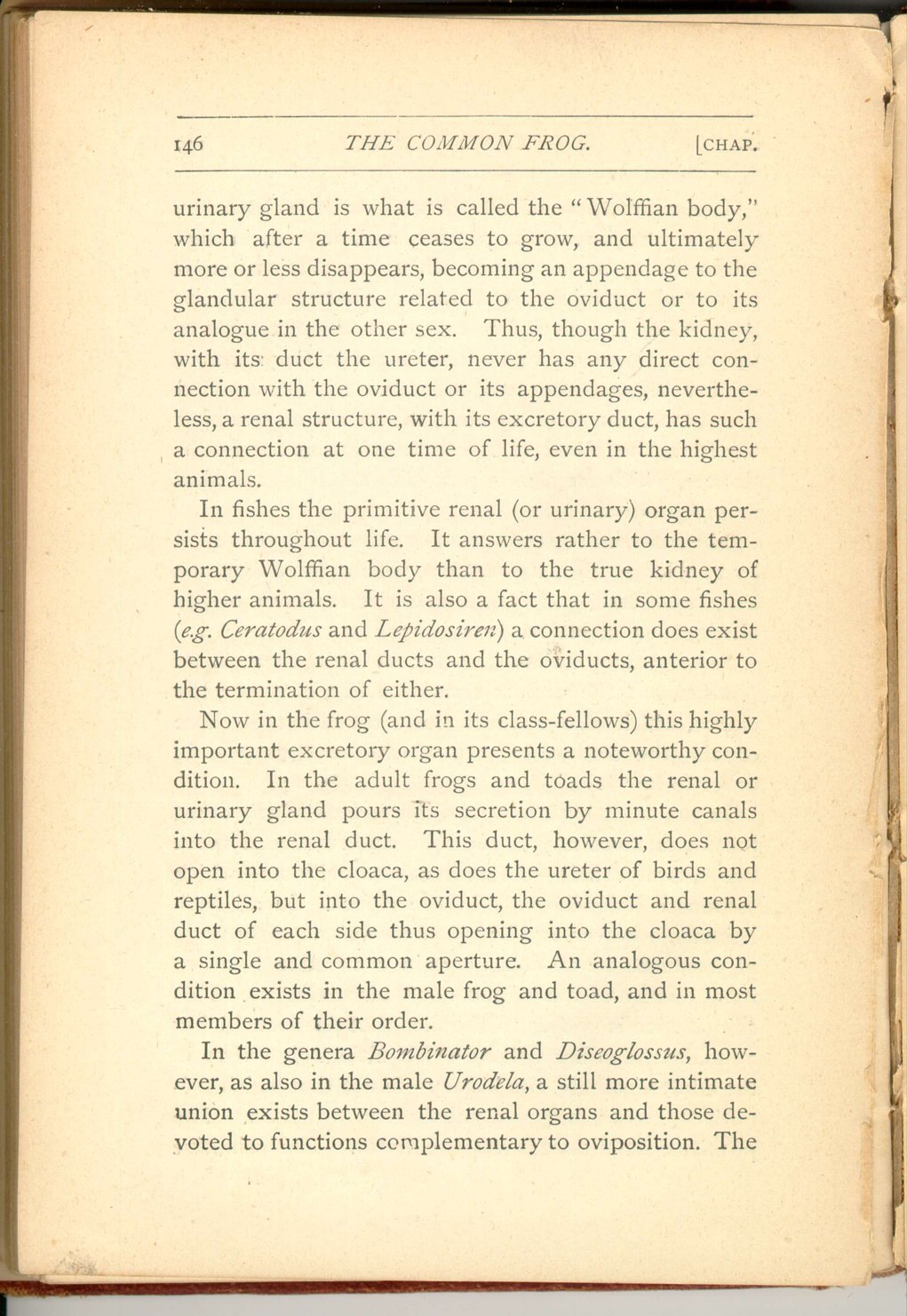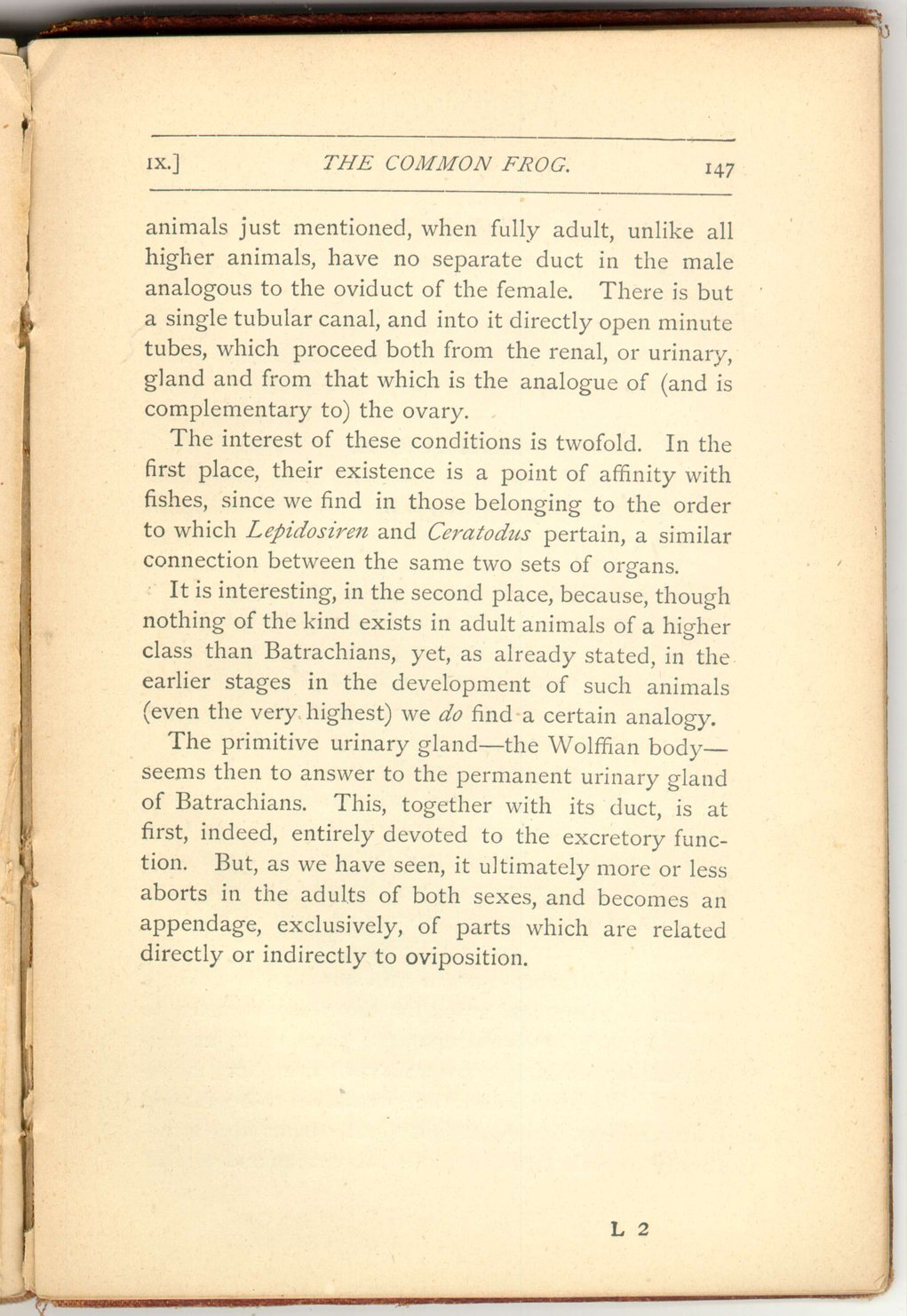|
CHAPTER IX.
THE CIRCULATION 0F THE FROG.
The Common Frog | ||
The Excretory 0rgans.
As has been said, it is a necessary action for every living being, whether plant or animal (in order that it may continue to live) to eliminate certain substances, the most noteworthy being carbonic acid, which is set free by the process of respiration.
The active processes of life, however, necessarily wear out, by their activity, parts containing the gas nitrogen, which enters into the composition of every animal, and especially into every part exhibiting much vital activity.
 [Description:
Image of page 145.
]
[Description:
Image of page 145.
]
The elimination of nitrogenous excreta becomes, then, a very important process, and, indeed, in ourselves death soon ensues when its elimination is prevented by injury or disease. That part of the body which is especially devoted to the excretion of the nitrogenous waste of the tissues is the renal or urinary organs—the two kidneys. Richly supplied with blood, the kidneys have the power of straining off from the blood (i.e. secreting) nitrogenous substances, which are also in part eliminated by the skin in perspiration.
The material so strained off or secreted, is conveyed by two long tubes, the ureters, which pass down, one from each kidney, to the bladder or reservoir of the nitrogenous excretion.
In very many animals, as e.g. in birds, there is no bladder, but the ureters terminate in a chamber, the cloaca, which also receives the termination of those canals (the oviducts) down which the eggs pass in order to be "laid."
In no adult bird, however, nor indeed in any adult reptile, is there any closer connection between these two sets of canals—the ureters and oviducts—which terminate independently in the cloaca. In all such animals, however, and in beasts also, at an early stage of existence we do find a certain connection between renal ducts and the oviducts or their analogues. This coincidence is owing to the fact that in such higher animals the urinary gland which ultimately exists in the adult—namely, the kidney—is not that which primitively exists, but is a subsequent formation. The primitive renal duct is not the ureter. The primitive
 [Description:
Image of page 146.
]
[Description:
Image of page 146.
]
In fishes the primitive renal (or urinary) organ persists throughout life. It answers rather to the temporary Wolffian body than to the true kidney of higher animals. It is also a fact that in some fishes (e.g. Ceratodus and Lepidosiren) a connection does exist between the renal ducts and the oviducts, anterior to the termination of either.
Now in the frog (and in its class-fellows) this highly important excretory organ presents a noteworthy condition. In the adult frogs and toads the renal or urinary gland pours its secretion by minute canals into the renal duct. This duct, however, does not open into the cloaca, as does the ureter of birds and reptiles, but into the oviduct, the oviduct and renal duct of each side thus opening into the cloaca by a single and common aperture. An analogous condition exists in the male frog and toad, and in most members of their order.
In the genera Bombinator and Diseoglossus, however, as also in the male Urodela, a still more intimate union exists between the renal organs and those devoted to functions complementary to oviposition. The
 [Description:
Image of page 147.
]
[Description:
Image of page 147.
]
The interest of these conditions is twofold. In the first place, their existence is a point of affinity with fishes, since we find in those belonging to the order to which Lepidosiren and Ceratodus pertain, a similar connection between the same two sets of organs.
It is interesting, in the second place, because, though nothing of the kind exists in adult animals of a higher class than Batrachians, yet, as already stated, in the earlier stages in the development of such animals (even the very highest) we do find a certain analogy.
The primitive urinary gland—the Wolffian body—seems then to answer to the permanent urinary gland of Batrachians. This, together with its duct, is at first, indeed, entirely devoted to the excretory function. But, as we have seen, it ultimately more or less aborts in the adults of both sexes, and becomes an appendage, exclusively, of parts which are related directly or indirectly to oviposition.
|
CHAPTER IX.
THE CIRCULATION 0F THE FROG.
The Common Frog | ||